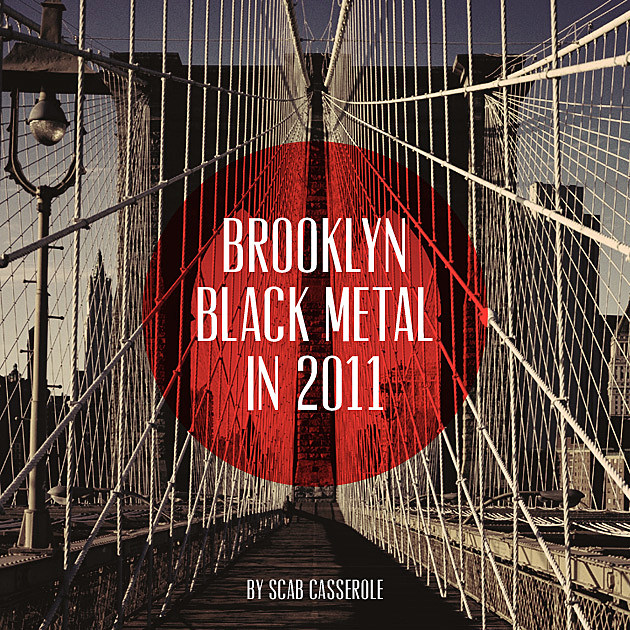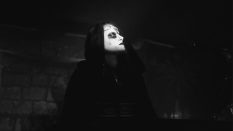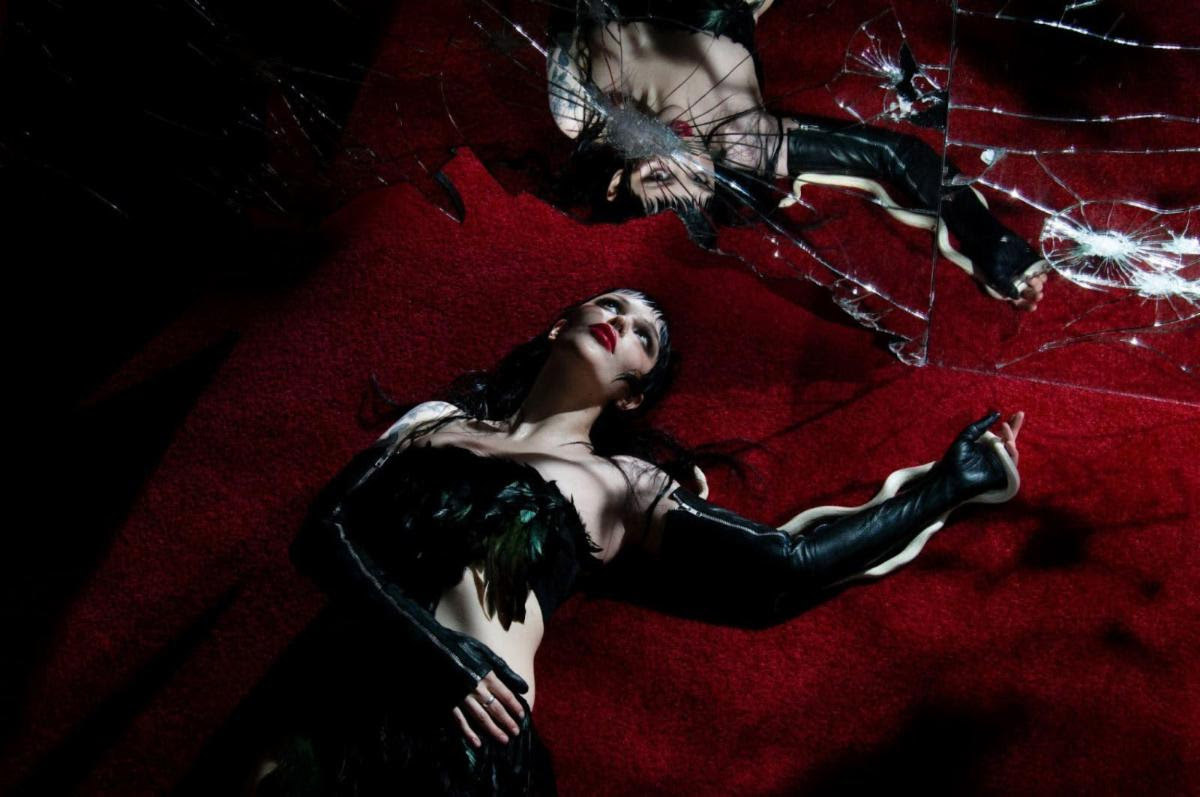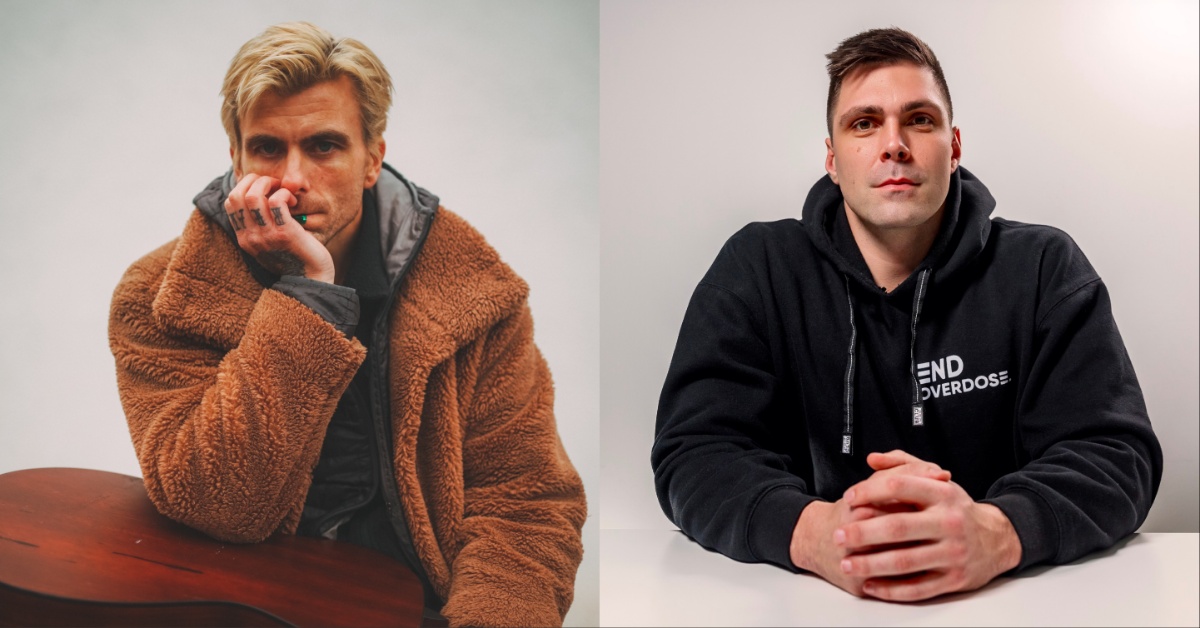
2011 in Review: Brooklyn Black Metal in 2011
. . .
“The solemn stillness of these grand old woods,
Amid whose labyrinthine paths I roam,
Sinks to the very soul, and so reveals
A language which the heart alone can read.
This is the land of shadows! Human life,
Save that within my breast, is here unknown.”
–Joseph Lemuel Chester, “Geenwood Cemetery”
In its oddly ancient way, Brooklyn seems like the perfect place for black metal. Compared to the compact insanity of Manhattan, Brooklyn is a sprawl of metro-industrial life, the iron foothills of the concrete jungle. Many of the nightmares that plagued the genre’s forefathers in late-’80s Norway are abstractly represented here: the blasé state-sponsored Christianity of there and then becomes the cutthroat economic everyday of here and now, and the forgotten pagan traditions of the old Vikings are now the hundreds of splintered ethnic identities that shed their blood and sweat across this borough. And in 2011, the slowly-mutating black metal sound coming out of Brooklyn seemed to come entirely into its own, stretching its sound in a crescendo that could no longer be ignored by the metal and mainstream press alike.
New York has always been a place where brilliant new music, metal or not, often develops in obscurity. But obviously, the overlap of the indie rock/hipster culture with the kvlt contingent has informed metal in Brooklyn. The new breed of young artists filling Williamsburg and Greenpoint are drawn to black metal for many of the same reasons they are attracted to Brooklyn: a mix of ironic derision and genuine reverence for its history. These disparate influences took hold in black metal’s soaring bleakness and added to it healthy doses of post-punk, hardcore, and shoegaze drone. The resulting sound is both emotional and unrelenting, soothing yet cacophonic, sacred and profane. Though it may sound very different from the misanthropic chugs of Hellhammer and Bathory, this new breed continues the tradition of intuitively channeling the deafening scream of one looking into the horror of his or her own soul.
The most recognizable face of Brooklyn black metal is Liturgy, whose Aesthetica was released to both critical acclaim and condemnation. The album itself is a magnesium flare of cocaine-flavored blackened noise, breathing stark yet intelligent new life into the genre with its whirling major chords and chattering drums. The band received untold amounts of mainstream press coverage, including repeated mentions in The New Yorker and placement on New York Magazine‘s back-page Approval Matrix (the record is placed all the way at the ‘Brilliant’ edge, hovering just over the line separating ‘Highbrow’ and ‘Lowbrow’). But the album’s crossover ability also made the band a favorite punching bag within the scene—it turns out, the thought process goes, that to get noticed as a black metal musician, you have to act like you’re not a black metal musician. In that way, Aesthetica is a perfect snapshot of the larger perception of the Brooklyn scene: a reinvention of the genre that got a little too brainy for its own good.
But Liturgy’s impact in 2011 can’t simply be judged by Aesthetica. Hunter Hunt-Hendrix, the band’s willowy frontman, became the official poster boy for false metal this year, prompting everything from casual Internet hateration to open letters from other independent metal bands deeming him pretentious and obnoxious. These claims seem to be tied to Hunt-Hendrix’s need to tout the band as “transcendental black metal”. And while his claims do seem self-serving and over-intellectualized (his publishing a tract outlining the transcendental black metal philosophy doesn’t help), Hunt-Hendrix is not the only person to speak out against traditional frost-bitten grimness; no one seemed terribly unnerved when Wolves In The Throne Room’s Aaron Weaver publicly announced his band’s separation from the right-hand-path magic of old-school Norse black metal. By being the right kind of kid—skinny jeans, loose T-shirt, quiet disposition, a seemingly stereotypical “Brooklyn hipster”—Hunt-Hendrix has made himself a polarizing figure in the scene.
After all, mainstream coverage and non-traditional influences do not a hipster make. This year, Brooklyn’s Krallice released Diotima, their third-full length album and the third in a row to receive rave reviews from both the metal press and Ben Ratliff of The New York Times. Like Liturgy, Krallice have been present and thriving in the New York scene for years, and have come fully into form as a staple of the scene in 2011. Sonically, Diotima is a leaden emotional maelstrom, an ever-churning sea of long-form sorrow with an unhinged sense of melody even darker and more foreboding than that of 2009’s Dimensional Bleedthrough. But though they have a similar sound to Liturgy’s —the jangling melodic noise, the bright rattling percussion, the wash-blend of vocals—Krallice remain a revered band in the metal scene, and many see their divergences from black metal traditions as experimenting in darkness rather than conforming to the “Williamsburg sound”.
“I’m not sure there is such a thing as a unifying sound in terms of what’s going on here with black metal,” says Lev Weinstein, Krallice’s drummer. “There’s a great homogeny of bands making music here, but I don’t think there’s a distinct sound. I honestly get kind of frustrated, reading mainstream stuff that doesn’t mention any other black metal bands. Like we jumped out of nowhere, fully-formed. There’s never anything there in terms of the progenitors . . . I just don’t understand, from a musical point of view, how you can ignore that. Like, I love Wolves In The Throne Room, both musically and as people, but I think the long-form atmospheric stuff has been there for a long time. I think there are some very novel things going on here—I like Tombs and Liturgy, but I don’t think those bands sound anything like each other, nor do I think we necessarily sound like either one”.
Weinstein touches on a good point: in the modern metal scene, certain musical attributes—long-form songs, pained emotionality in the guitar parts, a sense of atmospheric nihilism—earns a band the term “blackened”. It has become its own subdivision of metal’s many subdivisions, a term that is only semi-tangible. One such example is Tombs, the third and perhaps most important of the bands producing new extreme music in Brooklyn in 2011. With this year’s Path of Totality, Tombs have fused hardcore, thrash, doom, and goth to create a sweeping collection of paeans to anxiety, despair, and inevitability which is part of almost every metal press outfit’s Top Ten of 2011. And though not traditional black metal, the band is almost always referred to as ‘blackened’—blackened hardcore, blackened doom, blackened whatever. In certain ways, the adjective grasps the similarities between the band and their peers; in others, it’s just a word.
Mike Hill of Tombs goes with “black metal-influenced” in describing his band’s music. To him, much of the music coming out of New York isn’t necessarily black metal because of its variation from the norm. “Krallice is a black metal-influenced metal band, but I’m not sure they’re black metal music,” he says. “That first wave of black metal . . . like, Venom. Venom were kind of a joke. But Bathory and Celtic Frost really were it, with that dark philosophical anti-Christian feeling. And the second wave, all the Norwegian bands, took it from there and made it something. If there’s a band from here who are really doing black metal, it’s Black Anvil. They’re really fast and filthy”. Though a huge fan of the genre, Hill doesn’t consider his band necessarily part of it. The Brooklyn sound is really just a matter of where the good music is. “I just can’t personally identify any sort of music scene that interests me, as far as Manhattan and New York City proper. I don’t listen to hip-hop or party music or indie rock. In general, Brooklyn just has more of an underground style—they sell records, they put on shows”.
Indeed, Brooklyn’s metal output is far from just those things grim and necro. Plenty of local talents, from the crushing doomscapes of Hull to the old-school thrashings of Mutant Supremacy, are thriving in the city’s underground. But 2011 undoubtedly marks the year that Brooklyn’s far-out black metal scene went big-time, and there exists both the music and press coverage to show for it. On the one hand, maybe there will be the backlash, a movement to shake off the experimental gloom and noise-rock accessibility of the genre, in return for something uglier, less likely to interest outsiders. Or perhaps the music will keep growing outwards, the light of prominence allowing it to mutate into a stronger, darker sonic beast. Why New York has become its chosen soil is, at the end of the day, a moot point.
Mike Hill puts it simply: “This is a really hard place to live. You’ve got garbage, angry people, rats, and debris everywhere. There are so many people around at all times, but everyone is an island in New York. People who’ve lived here their whole lives, you can see it in them—they look worn down, like the nub of a human being. You need to express that negativity”.
. . .












